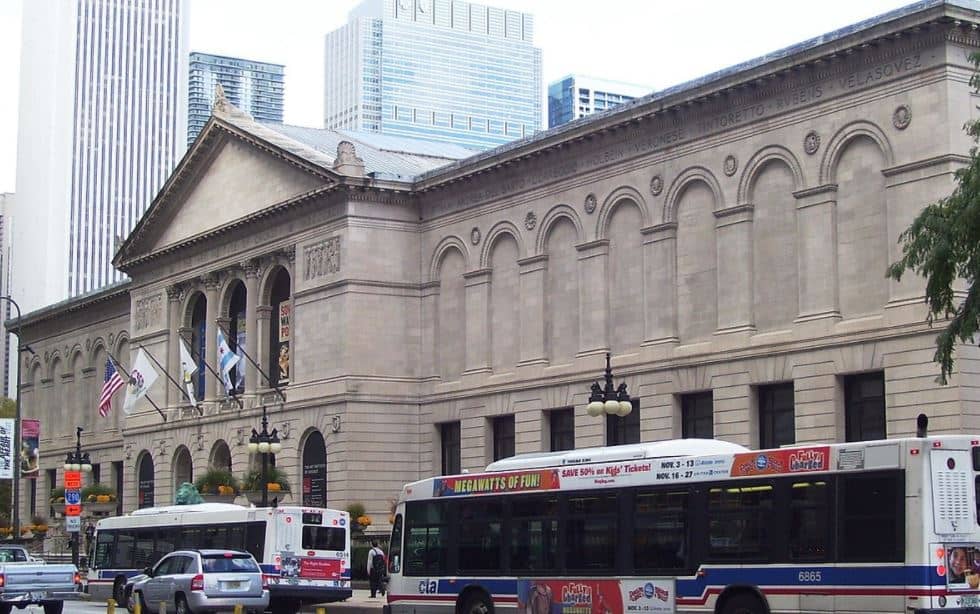One of the most famous buildings in Paris is a popular cabaret that features a distinctive red windmill.
I’m talking about the Moulin Rouge. This establishment first opened its doors in the late 19th century and served as a big inspiration for this renowned French artist.
Let’s take a closer look at some of the most interesting facts about At the Moulin Rouge by Henri de Toulouse-Lautrec (1864-1901), a Post-Impressionist painting with some interesting stories to tell.
1. It was completed shortly after the establishment opened its doors
The Moulin Rouge is arguably one of the most popular cabarets in the world, mainly because of its prominent features in various forms of media.
It’s located at 82 Boulevard de Clichy in the northern part of Paris, not too far from Montmartre. This neighborhood on a hill with the same name is known as the artistic quarter of the city.
The popular establishment was founded in the year 1889 and was an instant success. The red windmill on its roof has become an iconic landmark in this part of the city.
This place has been credited with being the place where the modern version of the can-can dance was invented. This started as a seductive dance by courtesans but transformed into a form of entertainment performed by professional dancers.
Toulouse-Lautrec completed this painting between 1892 and 1895, not too long after the place opened its doors.
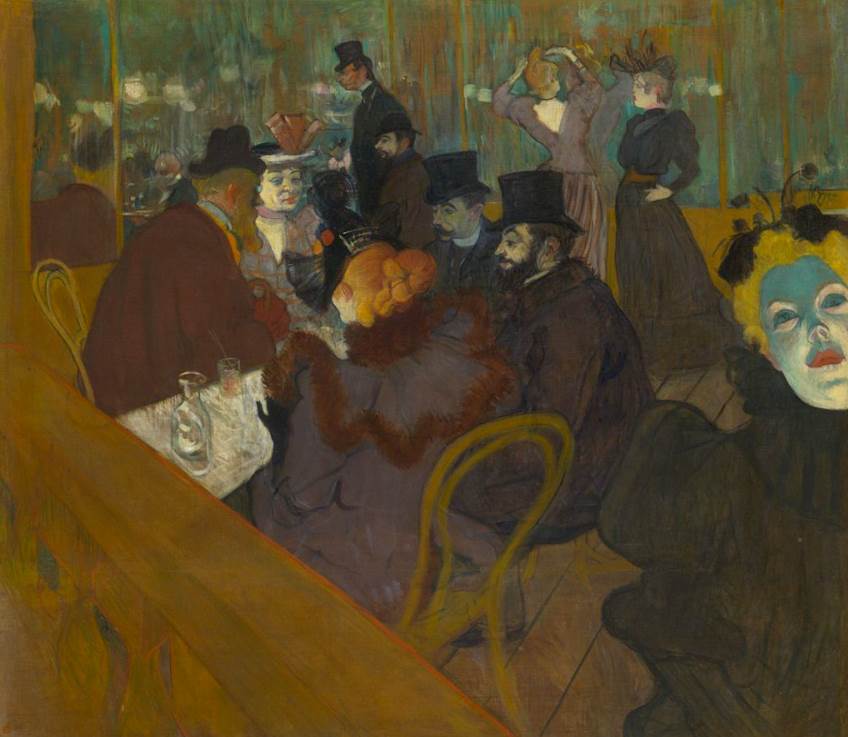
2. It depicts the interior of the original version of the cabaret
The Moulin Rouge opened its doors in 1889 and the painting provides us with a glimpse of the interior of the venue in the late-19th century. It opened as the “Jardin de Paris” and was partially outdoors.
What’s remarkable is that the Moulin Rouge still operates today with dance performances, but the original version doesn’t exist anymore.
That’s because it burned to the ground in 1915. Its enormous success during the first decades of existence led to the cabaret being replaced with the current version in 1925.

3. It was part of a commission for the artist by the Moulin Rouge owners
Henri de Toulouse-Lautrec was a multi-talented Post-Impressionist artist who adopted the ideals of Art Nouveau artists during the final years of his life as well.
He was a renowned painter but also a printmaker, draughtsman, caricaturist, and illustrator. This earned him a commission to design a series of posters for the newly established Moulin Rouge.
He was fully immersed in the abundant nightlife of Paris in the late-19th century and this allowed him to paint accurate representations of it. Unfortunately, it also resulted in an alcohol addiction that gradually deepened.
At the Moulin Rouge was painted around the same time that he produced various promotional posters of the establishment and dancers working at the cabaret.
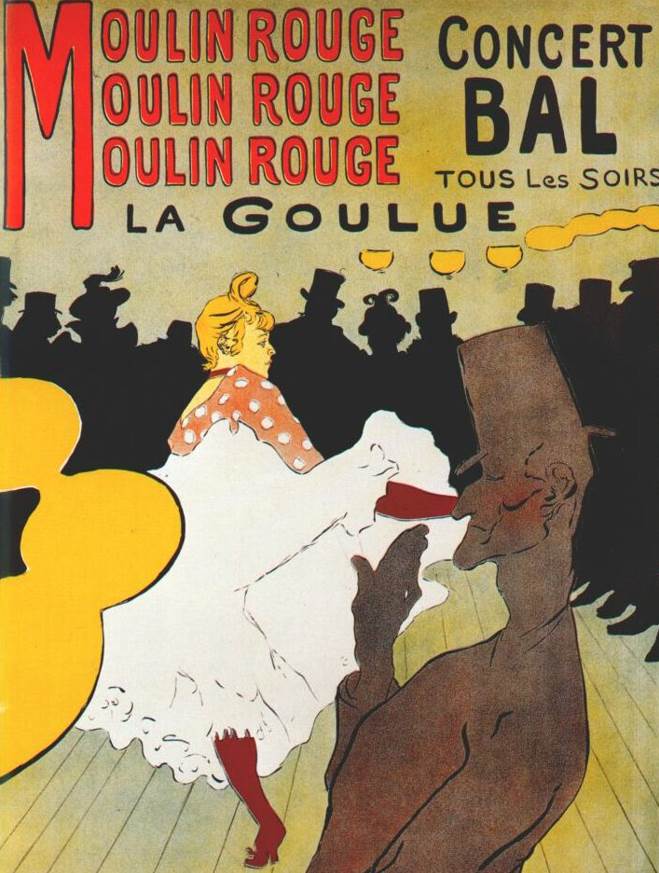
4. The people at the table have all been positively identified
The painting depicts a remarkable scene of the atmosphere inside the Moulin Rouge at the time. It features several people who the artist personally knew because he was a frequent visitor.
The central part of the composition features a table on which the following people are sitting from left to right:
- Édouard Dujardin (161-1949) – A French writer who perfected the stream of consciousness literary technique.
- A dancer named “La Macarona” who was featured in several other Toulouse-Lautrec works.
- Two photographers named Paul Secau and Maurice Guibert.
- The woman with red hair facing away from the viewer was a French can-can dancer named Jane Avril (168-1943).

5. Toulouse-Lautrec included a self-portrait in the background
Henri de Toulouse-Lautrec broke both his legs during his teenage years and this resulted in an undiagnosed medical condition.
His legs were under development as an adult which means that he was extremely short. Some historians suggest that this contributed to his love for brothels and alcohol.
His short size is emphasized in this painting as he included a self-portrait standing right behind the central table.
Next to him stands the much taller Dr. Gabriel Tapié de Céleyran, another person who was painted by the artist in 1894.

6. The scary greenish woman in the foreground was an English dancer
There are three more figures in the painting, two of who have been identified.
In the background, we can see the can-can dancer Louis Weber (1866-1929), better known by her nickname “La Goulue.” She is standing next to an unidentified woman.
Weber was considered to be the main star of the cabaret and is the woman featured in Toulouse-Lautrec’s promotional posters. She was known as the “Queen of Montmartre” and earned her nickname for drinking her patron’s drinks while dancing.
On the right side of the painting, we can see another dancer who is cast in a scary green shadow. She has been identified as the English dancer May Milton. Her glowing face embodies the rowdy atmosphere inside the cabaret.
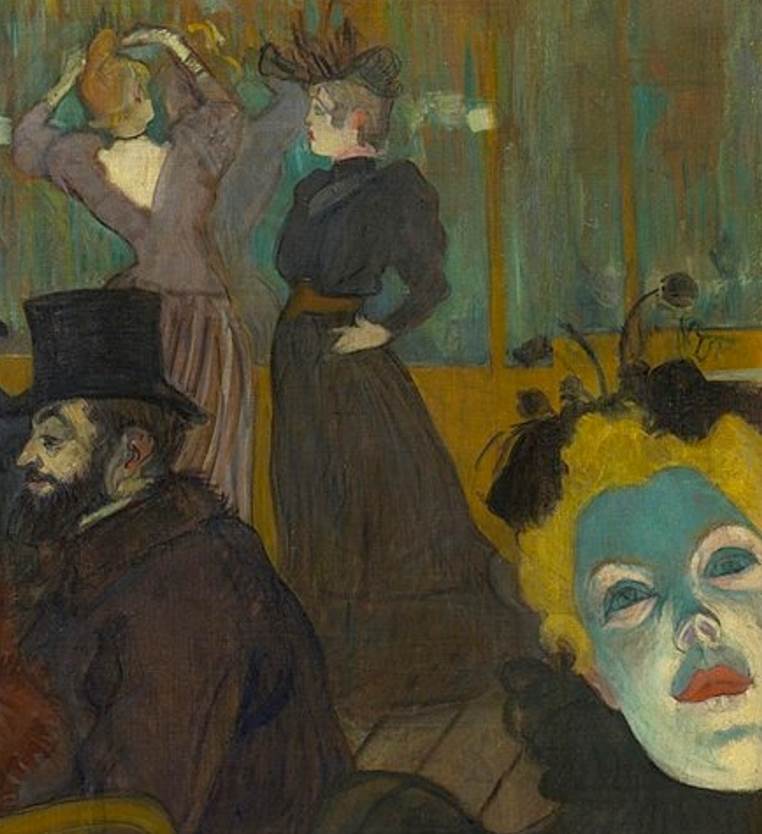
7. How big is At the Moulin Rouge by Henri de Toulouse-Lautrec?
It took about 3 years for the French painter to complete this painting. That’s not because it is an enormous work of art but rather because his alcoholism got way worse during this period.
At the Moulin Rouge by Henri de Toulouse-Lautrec is an oil on canvas painting that has dimensions of 123 × 140 centimeters (48 × 55 inches).
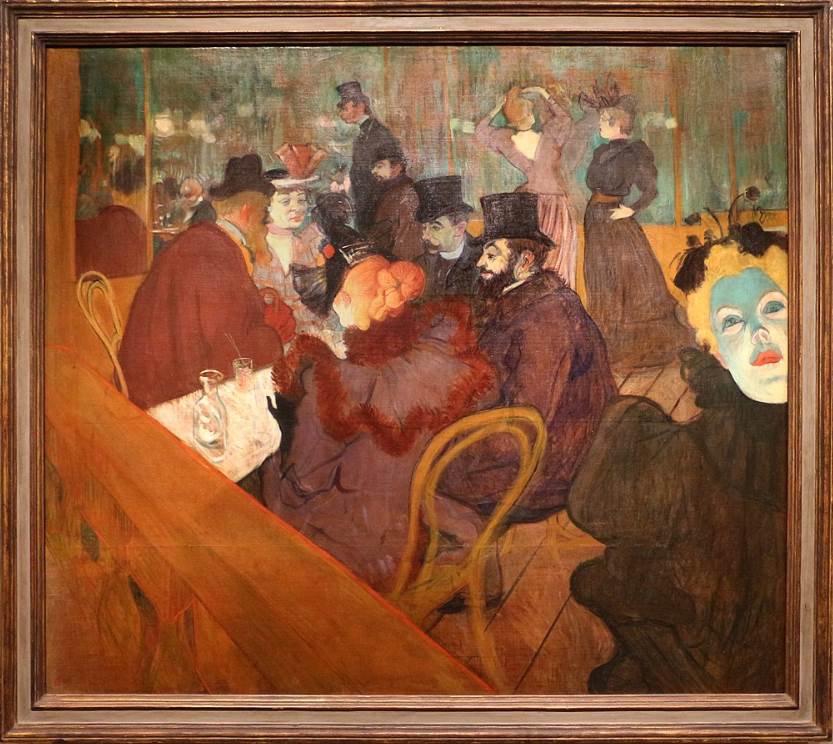
8. Where is the painting located today?
This magnificent masterpiece of Post-Impressionism was one of the paintings acquired by American art collectors Helen Louise Birch and her husband Frederic Clay Bartlett.
It entered the collection of the Art Institute of Chicago in 1928 as part of the Helen Birch Bartlett Memorial Collection.
Today, it can still be admired at this popular museum in the heart of Chicago.
